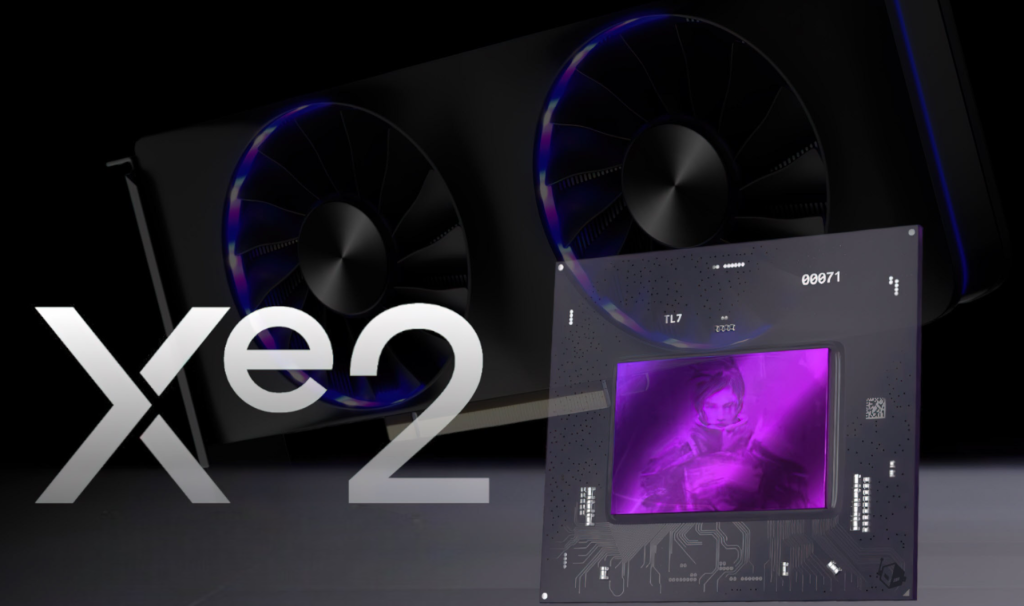Intel is making headlines in the graphics card market with the ongoing development of the Battlemage “BMG-G31” GPU, which is anticipated to elevate the company’s standing in the competitive landscape of gaming technology. The latest updates to the Intel Compute Runtime reveal that four new Device IDs have been added, indicating robust support for this forthcoming GPU. This follows the positive reception of the BMG-G21 series, which has laid a sturdy foundation for Intel’s continued innovation in the realm of graphics processing units.
New Developments in the Battlemage Series
As reported by Phoronix, the Intel Compute Runtime version 25.27.34303.5 has been updated to include support for the BMG-G31 GPU, along with four new Device IDs: 0xE220, 0xE221, 0xE222, and 0xE223. These additions confirm that Intel is advancing its development efforts for the BMG-G31, a product that has been long-awaited by enthusiasts and industry analysts alike. The inclusion of these Device IDs is significant, as it suggests that the engineering team is moving closer to ensuring compatibility with various systems and applications.
The BMG-G31 GPU is rumored to be equipped with an impressive 32 Xe2 cores, retaining the GDDR6 memory interface and likely featuring a 256-bit bus interface capable of supporting up to 16 GB of memory. This core count marks a 33% increase over its predecessor, the BMG-G21, which positions the BMG-G31 to deliver performance metrics comparable to popular offerings in the mid-range market, like NVIDIA’s RTX 5060 Ti and AMD’s RX 9060 XT. Both of these GPUs are priced between $350 and $450, placing significant pressure on Intel to price the BMG-G31 competitively if it hopes to capture a share of this lucrative segment.
Market Expectations and Competitive Analysis
Intel’s strategy appears focused on penetrating the mid-range graphics card market, which has become increasingly crowded with offerings from established brands like NVIDIA and AMD. The BMG-G31 aims to carve out a niche, especially as the company successfully launched the Arc B580, a graphics card that garnered a positive response at its $249 price point. If Intel can maintain similar pricing for the BMG-G31, potentially launching it around $329 to $349, it could pose a formidable challenge to other mid-tier GPUs.
The competitive landscape is not only shaping pricing strategies but is also pushing Intel to enhance performance and efficiency. According to reports, the BMG-G31’s memory bandwidth of 608 GB/s, alongside its GDDR6 memory speeds of 19 Gbps, underscores Intel’s commitment to not just match but exceed the capabilities of its competitors. Moreover, the expected power consumption levels and thermal design power (TDP) remain to be confirmed, which could further illuminate the GPU’s performance capabilities.
While concerns about the BMG-G31’s performance and market impact are valid, it is important to note that Intel has shown significant advancements in its GPU technologies. The anticipated launch of the BMG-G31 is expected around late 2025, giving Intel ample time to fine-tune its offerings based on consumer feedback and competitor developments.
Technical Specifications Overview
The performance and specifications of the BMG-G31 GPU are hot topics among hardware enthusiasts and analysts alike. As of now, some rumored specs have been identified, which illustrate Intel’s attempt to define the BMG-G31’s capabilities in the GPU market:
| Graphics Card Variant | Arc BMG-G31 | Arc BMG-G21 | Arc A770 |
|---|---|---|---|
| GPU Die | Arc BMG-G31 | Arc BMG-G21 | Arc ACM-G10 |
| Process Node | TSMC 5/4nm? | TSMC 5/4nm? | TSMC 6nm |
| Shading Units (Cores) | 4096 (32 Xe2-Cores) | 2048 (16 Xe2-Cores) | 4096 (32 Xe-Cores) |
| Memory Capacity | 16 GB GDDR6 | 12 GB GDDR6 | 16 GB GDDR6 |
| Memory Bus | 256-bit | 192-bit | 256-bit |
| Bandwidth | 608 GB/s | 456 GB/s | 560 GB/s |
As we anticipate more official announcements from Intel, industry experts will be closely monitoring the developments surrounding the BMG-G31 GPU. With its potential to redefine Intel’s position in the graphics card market, the BMG-G31 could be a pivotal product that either strengthens or disrupts the current dynamics between major competitors like NVIDIA and AMD.

